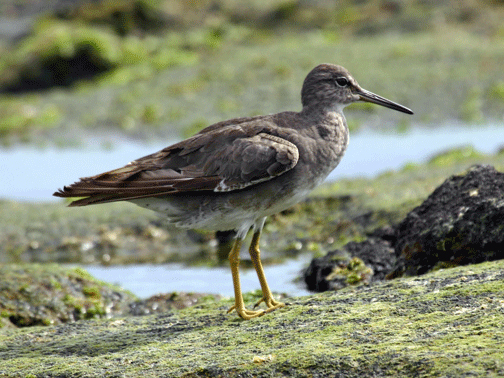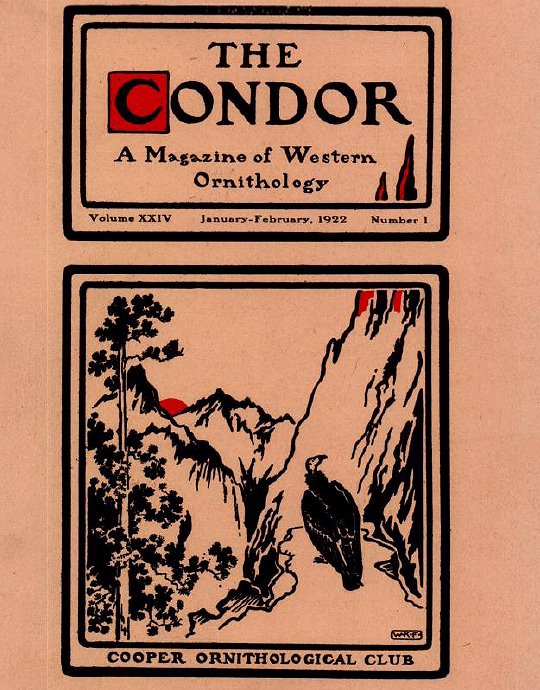|
Greenshank
The common greenshank (''Tringa nebularia'') is a wader in the large family Scolopacidae, the typical waders. The genus name ''Tringa'' is the New Latin name given to the green sandpiper by Aldrovandus in 1599 based on Ancient Greek ''trungas'', a thrush-sized, white-rumped, tail-bobbing wading bird mentioned by Aristotle. The specific ''nebularia'' is from Latin ''nebula'' "mist". Like the Norwegian ''Skoddefoll'', this refers to the greenshank's damp marshy habitat. Relatives Its closest relative is the greater yellowlegs, which together with the spotted redshank form a close-knit group. Among them, these three species show all the basic leg and foot colours found in the shanks, demonstrating that this character is paraphyletic. They are also the largest shanks apart from the willet, which is altogether more robustly built. The greater yellowlegs and the common greenshank share a coarse, dark, and fairly crisp breast pattern as well as much black on the shoulders and back i ... [...More Info...] [...Related Items...] OR: [Wikipedia] [Google] [Baidu] |
Johan Ernst Gunnerus
Johan Ernst Gunnerus (26 February 1718 – 25 September 1773) was a Norwegian bishop and botanist. Gunnerus was born at Christiania. He was bishop of the Diocese of Nidaros from 1758 until his death and also a professor of theology at the University of Copenhagen. Biography Gunnerus was born and raised in Christiania in Norway. He enrolled at the University of Copenhagen in Denmark in 1737, but had to postpone his studies for three years because of poverty. He studied in Copenhagen from 1740, at Halle in Germany from 1742, and at Jena from 1744, where he received his Magister degree in 1745 and in 1753 was admitted to the Faculty of Philosophy. At Jena he published extensively, notably a work on natural and international law in eight volumes. In 1754 he was recalled to Denmark and appointed Professor and Rector at Herlufsholm. In 1758 he became Bishop of the Diocese of Nidaros in Trondheim, Norway. Gunnerus was very interested in natural history and accumulated a large coll ... [...More Info...] [...Related Items...] OR: [Wikipedia] [Google] [Baidu] |
Tringa
''Tringa'' is a genus of waders, containing the shanks and tattlers. The genus name ''Tringa'' is the New Latin name given to the green sandpiper by the Italian naturalist Ulisse Aldrovandi in 1599. They are mainly freshwater birds, often with brightly coloured legs as reflected in the English names of six species, as well as the specific names of two of these and the green sandpiper. They are typically associated with northern hemisphere temperate regions for breeding. Some of this group—notably the green sandpiper—nest in trees, using the old nests of other birds, usually thrushes. The willet and the tattlers have been found to belong in ''Tringa''; these genus changes were formally adopted by the American Ornithologists' Union in 2006. The present genus in the old, more limited sense was even further subdivided into ''Tringa'' proper and ''Totanus'', either as subgenera or as full genera. The available DNA sequence data suggests however that neither of these is monophyl ... [...More Info...] [...Related Items...] OR: [Wikipedia] [Google] [Baidu] |
Oxfordshire
Oxfordshire is a ceremonial and non-metropolitan county in the north west of South East England. It is a mainly rural county, with its largest settlement being the city of Oxford. The county is a centre of research and development, primarily due to the work of the University of Oxford and several notable science parks. These include the Harwell Science and Innovation Campus and Milton Park, both situated around the towns of Didcot and Abingdon-on-Thames. It is a landlocked county, bordered by six counties: Berkshire to the south, Buckinghamshire to the east, Wiltshire to the south west, Gloucestershire to the west, Warwickshire to the north west, and Northamptonshire to the north east. Oxfordshire is locally governed by Oxfordshire County Council, together with local councils of its five non-metropolitan districts: City of Oxford, Cherwell, South Oxfordshire, Vale of White Horse, and West Oxfordshire. Present-day Oxfordshire spanning the area south of the ... [...More Info...] [...Related Items...] OR: [Wikipedia] [Google] [Baidu] |
Bird Migration
Bird migration is the regular seasonal movement, often north and south along a flyway, between breeding and wintering grounds. Many species of bird migrate. Migration carries high costs in predation and mortality, including from hunting by humans, and is driven primarily by the availability of food. It occurs mainly in the northern hemisphere, where birds are funneled onto specific routes by natural barriers such as the Mediterranean Sea or the Caribbean Sea. Migration of species such as storks, turtle doves, and swallows was recorded as many as 3,000 years ago by Ancient Greek authors, including Homer and Aristotle, and in the Book of Job. More recently, Johannes Leche began recording dates of arrivals of spring migrants in Finland in 1749, and modern scientific studies have used techniques including bird ringing and satellite tracking to trace migrants. Threats to migratory birds have grown with habitat destruction, especially of stopover and wintering sites, a ... [...More Info...] [...Related Items...] OR: [Wikipedia] [Google] [Baidu] |
Birds Described In 1767
Birds are a group of warm-blooded vertebrates constituting the class Aves (), characterised by feathers, toothless beaked jaws, the laying of hard-shelled eggs, a high metabolic rate, a four-chambered heart, and a strong yet lightweight skeleton. Birds live worldwide and range in size from the bee hummingbird to the ostrich. There are about ten thousand living species, more than half of which are passerine, or "perching" birds. Birds have whose development varies according to species; the only known groups without wings are the extinct moa and elephant birds. Wings, which are modified forelimbs, gave birds the ability to fly, although further evolution has led to the loss of flight in some birds, including ratites, penguins, and diverse endemic island species. The digestive and respiratory systems of birds are also uniquely adapted for flight. Some bird species of aquatic environments, particularly seabirds and some waterbirds, have further evolved for swimm ... [...More Info...] [...Related Items...] OR: [Wikipedia] [Google] [Baidu] |
Birds Of Africa
This is a list of the bird species recorded in Africa. The area covered by this list is the Africa region defined by the American Birding Association's listing rules. In addition to the continent itself, the area includes Madagascar, Mauritius, Rodrigues, Seychelles, Cape Verde, the Comoro Islands, Zanzibar and the Canary Islands, São Tomé and Príncipe and Annobón in the Gulf of Guinea. It does not include Socotra in the Arabian Sea, Madeira or the Azores. This list is that of the African Bird Club (ABC) supplemented by ''Bird Checklists of the World'' (Avibase) and ''The Clements Checklist of Birds of the World''.Clements, J. F., T. S. Schulenberg, M. J. Iliff, S. M. Billerman, T. A. Fredericks, J. A. Gerbracht, D. Lepage, B. L. Sullivan, and C. L. Wood. 2021. The eBird/Clements checklist of Birds of the World: v2021. Downloaded from https://www.birds.cornell.edu/clementschecklist/download/ Retrieved August 25, 2021 This list's Taxonomy (biology), taxonomic treatment (desi ... [...More Info...] [...Related Items...] OR: [Wikipedia] [Google] [Baidu] |
Birds Of Russia
This is a list of the bird species recorded in Russia. The avifauna of Russia include a total of 808 species, 2 of which one are endemic, 68 species are globally threatened, and 2 species are extinct. This list's taxonomic treatment (designation and sequence of orders, families and species) and nomenclature (common and scientific names) follow the conventions of '' The Clements Checklist of Birds of the World'', 2022 edition. The family accounts at the beginning of each heading reflect this taxonomy, as do the species counts found in each family account. Accidental species are included in the total species count for Russia. The following tags have been used to highlight several categories. The commonly occurring native species do not fall into any of these categories. *(A) Accidental - a species that rarely or accidentally occurs in Russia *(Ext) Extirpated - a species which no longer occurs in Russia, but other populations still exist elsewhere *(Ex) Extinct - a species whi ... [...More Info...] [...Related Items...] OR: [Wikipedia] [Google] [Baidu] |
Birds Of Scandinavia
Birds are a group of warm-blooded vertebrates constituting the class Aves (), characterised by feathers, toothless beaked jaws, the laying of hard-shelled eggs, a high metabolic rate, a four-chambered heart, and a strong yet lightweight skeleton. Birds live worldwide and range in size from the bee hummingbird to the ostrich. There are about ten thousand living species, more than half of which are passerine, or "perching" birds. Birds have whose development varies according to species; the only known groups without wings are the extinct moa and elephant birds. Wings, which are modified forelimbs, gave birds the ability to fly, although further evolution has led to the loss of flight in some birds, including ratites, penguins, and diverse endemic island species. The digestive and respiratory systems of birds are also uniquely adapted for flight. Some bird species of aquatic environments, particularly seabirds and some waterbirds, have further evolved for swimmi ... [...More Info...] [...Related Items...] OR: [Wikipedia] [Google] [Baidu] |
The Condor (journal)
''Ornithological Applications'', formerly ''The Condor'' and ''The Condor: Ornithological Applications'', is a peer-reviewed quarterly scientific journal covering ornithology. It is an official journal of the American Ornithological Society. History The journal was first published in 1899 as the ''Bulletin of the Cooper Ornithological Club'' by a group of biologists in California. The journal's scope was regional, covering the western United States. In 1900, the name was changed to ''The Condor''. In 1947, the journal's subtitle was shortened to ''The Condor, Journal of the Cooper Ornithological Club''. Editors-in-Chief: 1899-1902: Chester Barlow; 1902-1905: Walter K. Fisher with Joseph Grinnell as Associate Editor; 1906-1939 Joseph Grinnell; 1940-1966: Alden H. Miller Berkeley, CA; 1966-1968: James R. King Washington State; 1969-1973: Ralph J. Raitt New Mexico State University; 1973-1974: Francis S. L. Williamson SI Chesapeake Bay Center for Environmental Studies, Edgewater, MD ... [...More Info...] [...Related Items...] OR: [Wikipedia] [Google] [Baidu] |
Common Redshank
The common redshank or simply redshank (''Tringa totanus'') is a Eurasian wader in the large family Scolopacidae. Taxonomy The common redshank was formally described by the Swedish naturalist Carl Linnaeus in 1758 in the tenth edition of his ''Systema Naturae'' under the binomial name ''Scolopax totanus''. It is now placed with twelve other species in the genus '' Tringa'' that Linnaeus had introduced in 1758. The genus name ''Tringa'' is the New Latin name given to the green sandpiper by the Italian naturalist Ulisse Aldrovandi in 1603 based on Ancient Greek ''trungas'', a thrush-sized, white-rumped, tail-bobbing wading bird mentioned by Aristotle. The specific ''totanus'' is from , the Italian name for this bird. Six subspecies are recognised: * ''T. t. robusta'' ( Schiøler, 1919) – breeds in Iceland and the Faroe Islands; non-breeding around the British Isles and west Europe * ''T. t. totanus'' (Linnaeus, 1758) – breeds in west, north Europe to west Siberia; winter ... [...More Info...] [...Related Items...] OR: [Wikipedia] [Google] [Baidu] |
Museum Wiesbaden
The Museum Wiesbaden is a two-branch museum of art and natural history in the Hessian capital of Wiesbaden, Germany. It is one of the three Hessian State museums, in addition to the museums in Kassel and Darmstadt. History The foundation of the originally three museums traces back to the citizens of the city and to Johann Wolfgang von Goethe, who stayed in Wiesbaden in 1814/1815 for a rehabilitation measure, and worked hard to establish such a cultural institution. In 1825 he persuaded the Frankfurter private collector to donate his extensive collections of works of art, antiquities and in kind to the Duchy of Nassau in return for the payment of an annuity for life. Under the responsibility of the newly founded associations, but controlled by the ducal government, the citizens of Wiesbaden and the region were able to quickly expand these collections. Together with the pieces of the ("Association for Nassauian Antiquity and Historical Research") founded in 1812, three ori ... [...More Info...] [...Related Items...] OR: [Wikipedia] [Google] [Baidu] |


.jpg)


